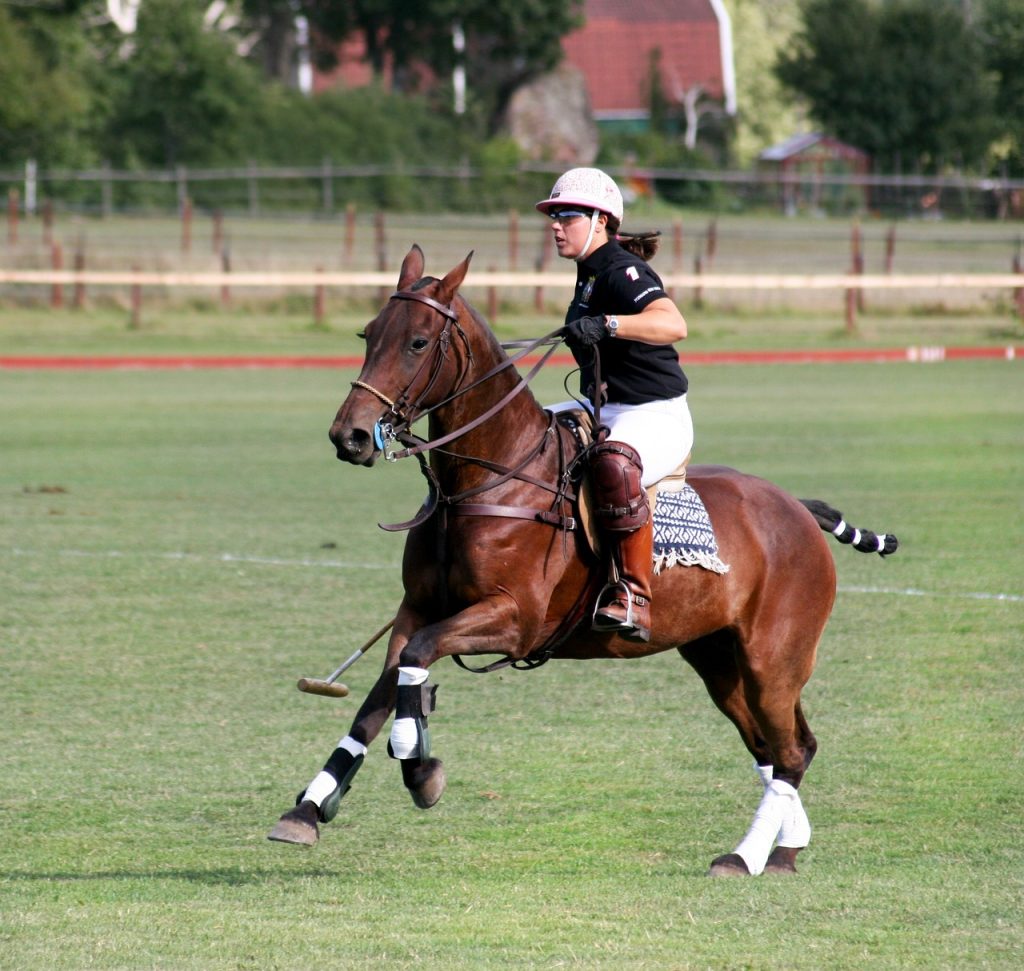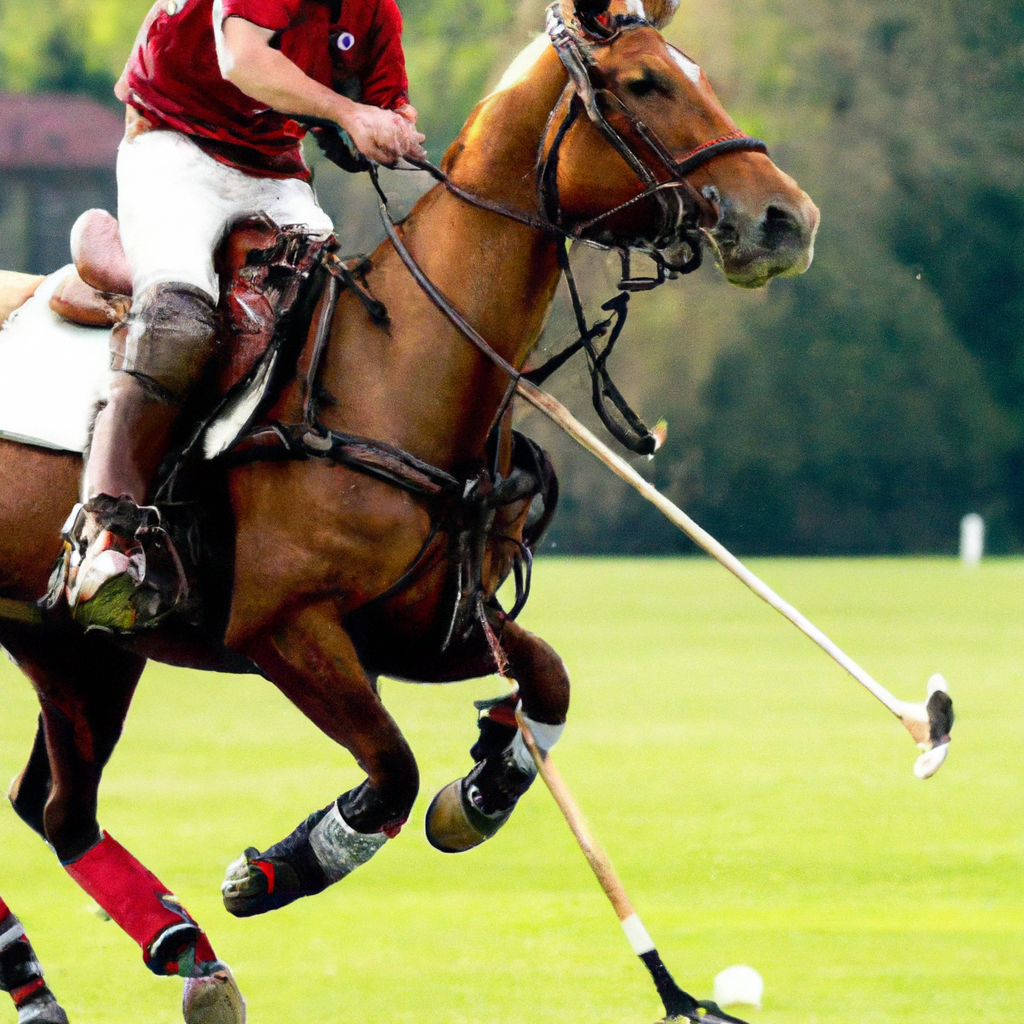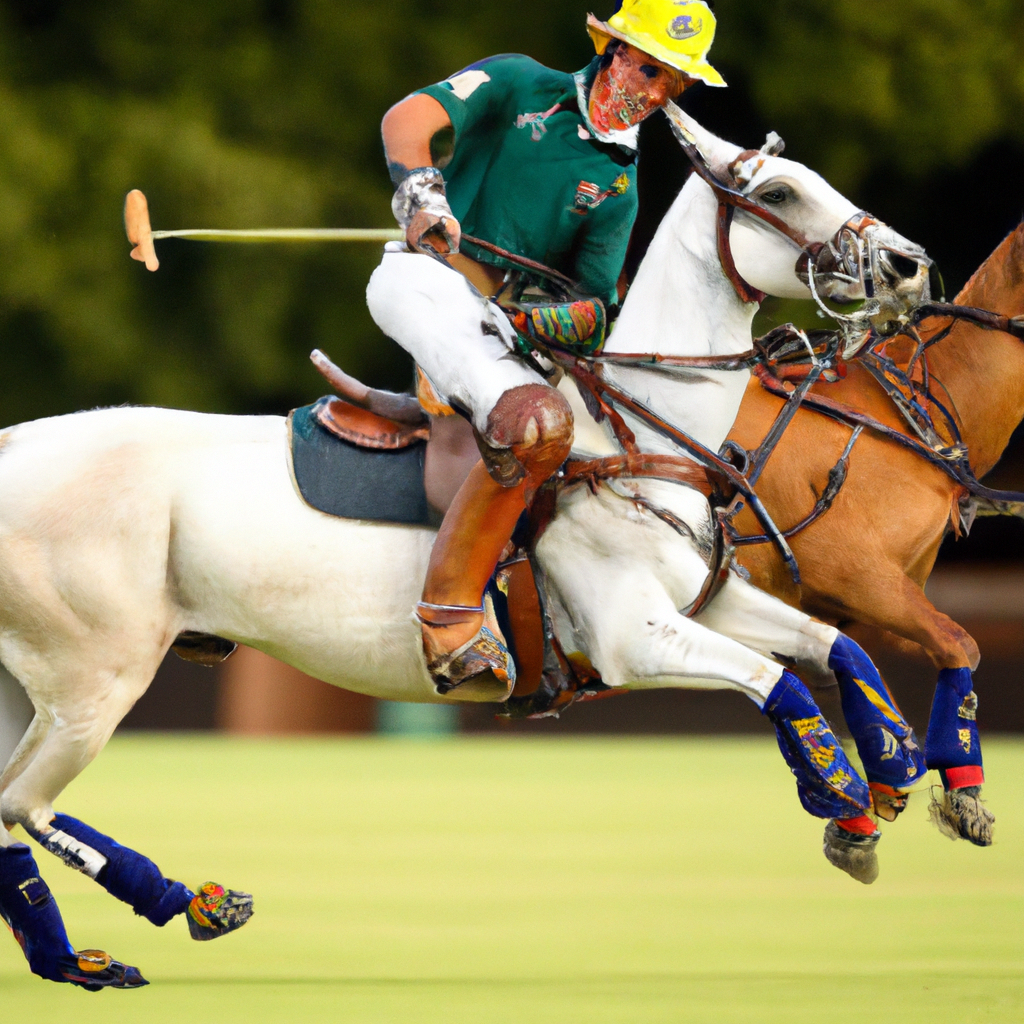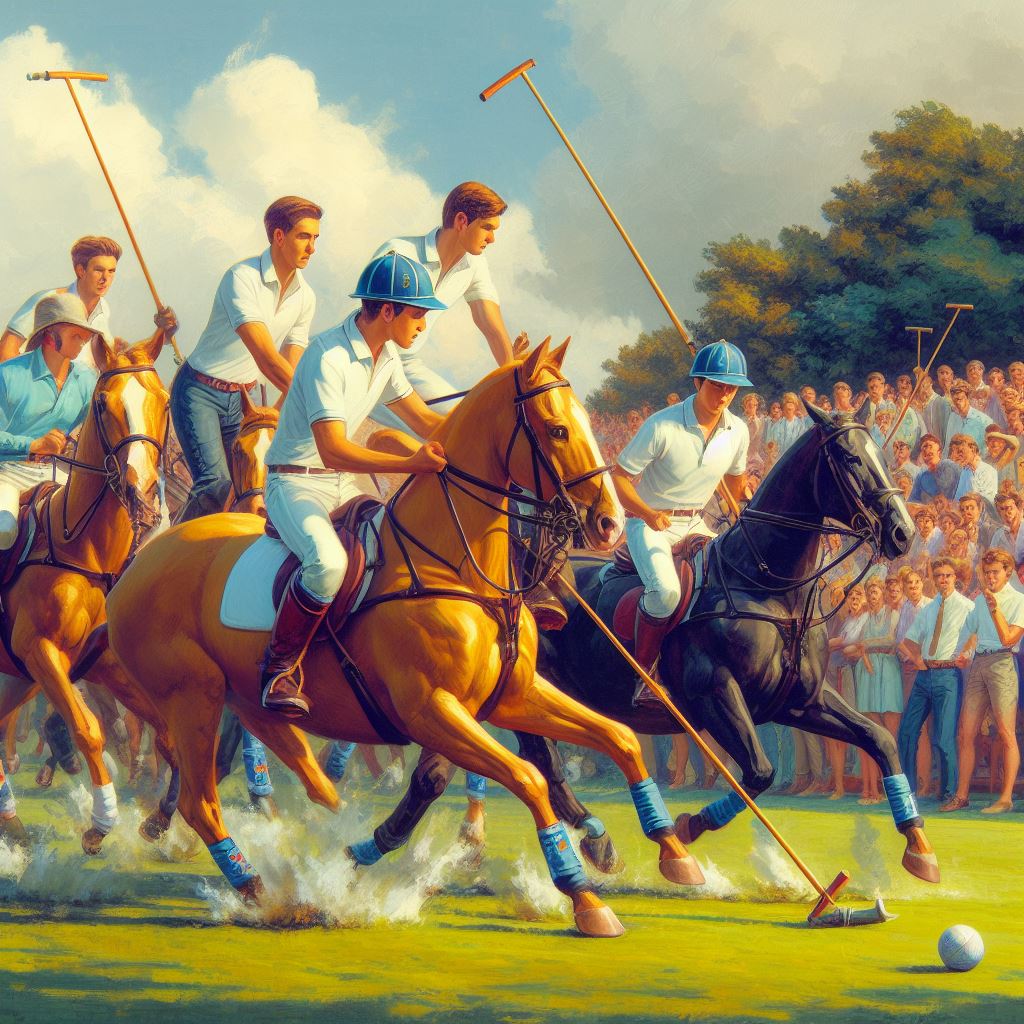“Mastering Balance: A Journey to Advanced Polo Riding” is a deep exploration into the intricate art of achieving and maintaining your equilibrium as you elevate your polo riding skills. The article highlights the transition from an advanced beginner stage, where you can ride independently, maintain rhythm and are ready to canter, towards becoming an adept polo rider. It underscores the art of balance, essential to stay mounted and maneuver the horse without relying on brute leg strength or using reins as lifelines. By perfectly aligning your center of gravity with that of the horse, you begin your journey towards advanced polo riding.
This image is property of pixabay.com.
Understanding Polo Riding
To comprehend polo riding quite well, it’s essential to grasp the basic concepts, the important skills required, and the role of balance.
Basic concepts of Polo
Polo, also known as the ‘Sport of Kings’, is an ancient team sport that involves two teams of four players each, trying to hit a small ball into the opposing team’s goal using long-handled mallets, while riding on horseback. The game is traditionally played on a large outdoor field, but variations of the sport can also be played indoors or on the beach.
Important skills for Polo riding
The key skills for polo riding include proper reins handling, achieving the right riding position, and maintaining balance on the horse. It also requires a deep understanding of the game’s rules, along with good hand-eye coordination for the accurate hitting of the ball. Moreover, being a team sport, polo requires strong communication and strategic planning skills too.
Role of balance in Polo riding
Balance is one of the most critical aspects of polo riding. It’s all about managing your center of gravity to stay on the horse irrespective of its movements or direction changes. Achieving good balance allows for smoother rides and better control over the horse, which are vitally important for playing polo effectively.
Levels of Polo Riding
Every polo player starts as a beginner and progresses through intermediate to advanced levels with practice and experience.
Beginner level
As a beginner, you will start learning the basics of polo, such as mounting and dismounting, knowing the rules of the game, learning how to handle the reins, and starting to develop your balance on the horse.
Intermediate level
At the intermediate level, you should be comfortable riding the horse at a walk, trot, and canter. Your balance should be getting better, and you should be able to hit the ball with the mallet while moving. This level also involves learning more advanced strategies and techniques.
Advanced level
Advanced level polo riding involves mastering the game and all its permutation and combinations. Your balance should be impeccable; the reins and mallet handling, flawless. It involves implementing complex strategies, understanding horse behavior better, playing in high-goal games, and perhaps, even participating in polo tournaments.
Mastering the Basic Skills
To progress in polo, mastering certain basic skills is vital.
Proper mounting and dismounting
Mounting and dismounting a horse are the very first skills to learn in polo riding. Doing it correctly ensures your safety and prevents injuries.
Achieving the right posture
The correct riding posture is integral to maintaining balance and control on the horse. It involves aligning your head, shoulders, hips, and heels in a straight line, while staying relaxed and flexible.
Understanding and controlling rhythms
One of the pivotal aspects of polo riding is understanding and controlling the rhythms – the walk, trot, and canter. A smooth rhythm ensures balance and horse control, thereby improving your performance in the game.
Advanced Techniques for Balance
Once the basics are mastered, you can start working on more advanced techniques to improve your balance.
Importance of keeping center of gravity
Keeping your center of gravity aligned with that of the horse is the key to maintaining balance. It allows for smooth transitions between different speeds and directions, and helps in accurate hitting of the ball.
Techniques to improve balance
Improving balance involves different techniques, such as ‘posting’ at the trot (rising and falling rhythmically in the saddle), practicing transitions between different gaits, and riding without stirrups. Regular practice of these techniques can significantly enhance your balance.
Common mistakes and how to correct them
A common mistake beginners make is gripping the horse with their legs or using the reins to maintain balance. Remember, balance comes from the correct posture and use of the core muscles, not from gripping. Overcorrecting the horse’s movements or leaning too forward or backward are other common mistakes. Trainers and more experienced players can provide helpful feedback on these issues and guide you on the correct path.

This image is property of pixabay.com.
The Role of the Horse in Achieving Balance
A rider’s balance is interlinked with the horse’s movements and rhythm. Understanding this connection is pivotal for a successful polo ride.
Understanding horse movements
Capturing the movements of a horse and adapting accordingly is fundamental for achieving balance. Being mindful while riding, understanding the horse’s rhythm in different gaits, and observing its reactions to your commands can help in aligning your movements with the horse’s.
Synchronizing rider’s balance with horse’s rhythm
Balance is not just about what the rider does, it’s also about harmonizing the rider’s movements with the horse’s rhythm. Learning this synchronization can result in a smoother and safer ride, enhancing the performance in the game.
Building connection and trust with the horse
Building a connection and trust with your horse is crucial for a successful polo ride. A deeper bond can lead to a better understanding of the horse’s signals and predictable and controlled responses from the horse to your commands, which ultimately aids to maintain balance.
Moving from Beginner to Advanced Polo Riding
As you make the journey from a beginner to advanced polo rider, mastering control at different gaits, getting familiar with advanced training techniques, and overcoming challenges is essential.
Mastering control at walk, trot, and canter
A successful polo ride requires mastering control at walk, trot, and canter. Being comfortable and maintaining balance at each of these gaits offers flexibility in the game as you can adjust your speed and strategy according to the game’s dynamics.
Advanced Training Techniques
Advanced training techniques help you to improve your skills. These may include learning different kinds of mallet strokes, trying more complex play strategies, playing in scrimmage matches, or practicing horse control in challenging situations.
Overcoming challenges
Overcoming challenges like fear, developing stamina, dealing with high-pressure situations, and learning from failures are a significant part of the journey from beginner to advanced level. The key is to keep practicing, stay motivated, and believe in your progress.
The Next Level: Advanced Polo Play
After mastering advanced polo riding, it’s time to learn about advanced strategies, practice advanced moves, and maybe even participating in polo tournaments.
Understanding advanced Polo strategies
Playing polo at an advanced level requires a deep understanding of game strategies, such as creating space, blocking the opponents, passing the ball to your teammates, and defending your goal. Strategies may vary based on the team’s strengths, the opponents, the condition of the polo field, and even the weather.
Practicing advanced Polo moves
Advanced Polo moves include various types of swings, precision hitting, controlling the ball at a gallop, making sharp turns, and taking penalties effectively. It’s pertinent to keep practicing these moves to enhance your game proficiency.
Participating in Polo tournaments
Participating in polo tournaments could be the next big step for an advanced polo rider. It’s an opportunity to test your skills against other proficient players and teams. Tournaments can be challenging and intense, but they offer an unparalleled learning experience and a chance to connect with the global polo community.
Physiological Aspect of Balance
Physical strength and fitness play a crucial role in maintaining balance, especially when you’re riding at advanced levels of polo.
Role of core strength in maintaining balance
Good core strength is instrumental in maintaining balance. Engaging your core muscles helps you to stay centered on the horse, allows for smoother transitions between gaits, and supports you while swinging the mallet or making sharp turns.
Importance of physical fitness for advanced Polo
Maintaining overall physical fitness is vital for advanced polo. It helps in building endurance for longer games, reduces the risk of injuries, and aids in better control over the horse. Regular cardiovascular exercises, strength training, and flexibility drills could be beneficial.
Recommended exercises for Polo riders
Exercises for polo riders should focus on improving core strength, enhancing flexibility, and building overall stamina. Some recommended exercises include planks, squats, lunges, yoga poses for flexibility, and aerobic exercises for cardiovascular fitness.

Mental Aspect of Polo Riding
The mental aspect is as important as the physical one when it comes to polo riding. It involves overcoming fears, staying focused, and building mental resilience.
Overcoming fear and anxiety
Fear and anxiety are common for beginners, but even advanced players may experience them in high-pressure situations. Techniques like visualization, mindfulness, positive affirmations, and controlled breathing can aid in overcoming these fears and staying calm and composed.
Promoting focus and concentration
Focus and concentration are pivotal in polo as they enable you to comply with the game’s dynamics and make swift decisions. Regular mental exercises and techniques like meditation can improve focus and concentration.
Role of mental strength in advanced Polo riding
Mental strength plays an indispensable role in advanced polo riding. It helps you overcome setbacks, stay motivated, persevere through tough training sessions, and keep your cool in high-stakes games.
Nurturing the Rider-Horse Relationship
A profound understanding and an emotional bond between horse and rider can take the game to another level.
Communicating effectively with your horse
Learning how to communicate effectively with your horse can significantly affect your polo game. It involves proper reins handling, use of leg and seat aids, and understanding horse’s signals and reactions to your commands.
Understanding horse behavior and signals
Understanding horse behavior and signals can make riding safer and more enjoyable. Taking time to observe your horse’s behavior, its comfort level, and reactions to diverse situations can provide valuable insights into its mindset.
Building a strong bond for better performance
Building a strong bond with your horse can ensure better performance. Spending quality time with your horse, caring for its needs, taking it for leisure walks, or simply talking to it can help build this bond.
In conclusion, achieving balance and mastering polo riding is not just about being a skilled rider; it’s also about understanding the nature of the horse, building trust, staying fit and focused, and having resilience. It’s a journey filled with countless learning experiences that not only shape you into a proficient polo player but also help you grow personally. Embrace the process, cherish the bond with your horse, and enjoy the thrilling journey of polo riding.

